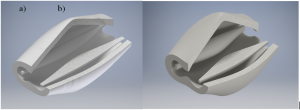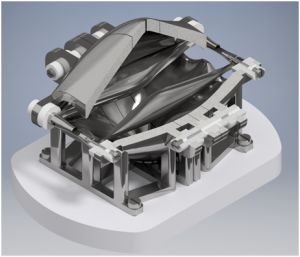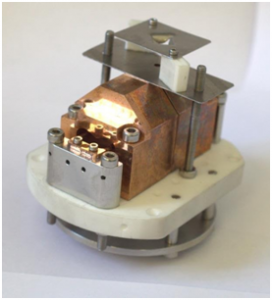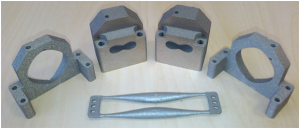Multielectrode Kingdon trap
MultielectrodeKingdon trap
Mass spectrometry is a proven method for the determination of the material substance chemical composition that is based on the identification of compounds through accurate mass measurements of their molecules. Mass spectrometry is suitable for a variety of applications in chemistry, medicine, and in the space exploration. In recent missions, it was used for the analysis of the interplanetary medium and upper and lower planetary atmospheres, the chemical composition of planets and small body environments.
Mass spectrometers for space research become a smaller, low weight and low power consumption. This tendency encourages industry to develop a new generation of miniaturized mass spectrometers with better characteristics. Ion Traps are frequently used in cases when sensor miniaturization is needed. One of the types of the ion traps which was not used so far for this application is Kingdon trap. Such type of mass spectrometer could have the mass resolution more than an order higher than the resolution of the currently used instruments.
Fig.1 – Geometries of the Kingdon Trap: a) two inner electrodes, b) four associated inner electrodes.
The main problem of making a Kingdon trap is connected to their very complicated geometry with lack of rotational symmetry. Additive technologies are appropriate for this case. 3D printing provides probability to meet all requirements of the Ion Trap’s manufacturing and even open new opportunities. This manufacturing method could be quickly modified for the new geometries.
Fig.2 – 3D model of the Kingdon trap with four associated inner electrodes and four outer electrodes.
This project goal is to develop the new type of high-resolution miniaturized mass spectrometer based on the electrostatic Ion Trap. Ion Trap should have high resolution (>5000), small weight (<1kg), and small power consumption (<100W).
Fig.3 – A prototype of the Kingdon trap with two inner electrodes and two outer electrodes. Manufacturing Method: Milling. Material: Cuprum.
The knowledge for the implementation of portable mass spectrometry systems with the mass resolution more than an order higher than the resolution of the state of the art instruments could make possible new applications of this type mass spectrometry, e.g., identification of compounds through accurate mass measurements of their molecules. We are developing mass spectrometer for space exploration purposes. However, a proposed mass spectrometer can be modified to include a vacuum system to implement a standalone, compact, and portable high‐resolution mass spectrometer suitable for a great variety of earthbound applications including detection of explosives, and monitoring of contaminants and toxic substances in the air, water, and food.
Fig.4 –A prototype of the Kingdon trap with two inner electrodes and four outer electrodes. Manufacturing Method: Selective Laser Sintering, Material: Stainless Steel.



